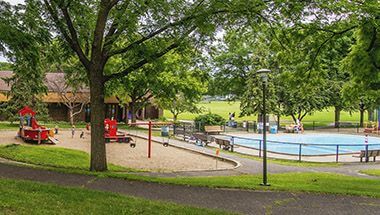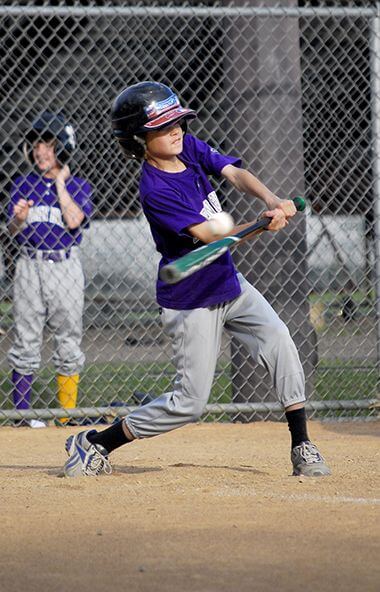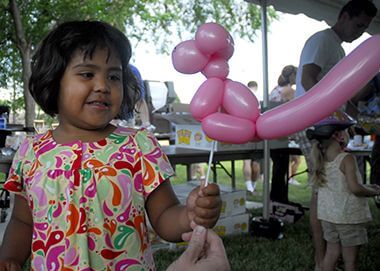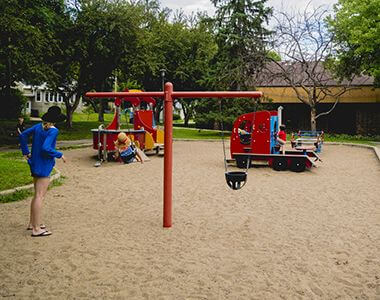Address
3523 W 48th St.
Minneapolis, MN 55410
Plan Your Route
Contact
Phone: 612-370-4928
Email: info@minneapolisparks.org
Park Hours
6 am-midnight
Ordinance PB-2-33
Wading Pool Information
Features & Amenities
- Baseball Field
- Basketball Court
- Drinking Fountain
- Little Free Library
- Playground/Tot Lot
- Restroom Facility
- Soccer Field
- Softball Field
- Tennis Court
- Wading Pool
- Walking Path
Not finding what you’re looking for?
Search Parks & Destinations
Good to Know
Park Projects
See what’s currently in the works for this park. Some projects may be under the name of the regional park or service area it lives within. View Current Projects

Your NPP20 money at work:
Maintenance is increasing at all neighborhood parks, thanks to additional annual funding from the 20-Year Neighborhood Park Plan (NPP20). This initiative also funds ongoing rehabilitation and major project to restore neighborhood parks and help address racial and economic equity.
Park Details
Rentals & Permits
Athletic Rentals: Call the recreation center directly to reserve a field, court, or rink for a single practice or game. Visit Recreation Center Rentals for details.
Recurring Athletic Rentals: To reserve a field, court, or rink for two or more dates, visit our athletic permit page.
Outdoor Use and Event Space: Learn how to reserve park space for corporate events, community celebrations, and more.
History
Name: The park was named for General John J. “Blackjack” Pershing, commander of American forces in World War I. The name was requested by the Robert Fulton Community Club and formally adopted December 5, 1922. In January 1923 the board received a note of thanks from General Pershing for naming the park in his honor. The board immediately approved a motion to have Pershing’s letter framed and hung in the offices of the park board.
Acquisition and Development
The land for the park was designated for purchase on September 22, 1922. The action to purchase the land followed an inspection visit to the site by park commissioners in May of that year. The board completed appraisals of the land to be taken for the park and confirmed awards for the land, amounting to $27,200, in February of 1923. The entire amount was assessed on property in the vicinity of the park, to be paid over five years.
There appears to have been no intention to improve the land any time soon after its purchase. In his 1925 annual report, in which he presented a future plan for the park’s development, park superintendent Theodore Wirth wrote that no pressure for improvement of the park “has been in evidence thus far, but may be expected in the near future.” Wirth noted then that before the land could be developed as a park it had to be drained and filled. The park board had purchased another wet patch of land. The vast majority of neighborhood parks purchased were very wet, which is one reason they didn’t often have houses on them and were affordable.
In 1929, Wirth’s plan was revised due to cooperation with the school board, which planned to build a new high school, tentatively named Alexander Bell High School, on the land to the east of the park. Shelter facilities for the park were to be part of the school. However, the following year Wirth submitted another revision to his plan, which included a park shelter this time, because it had become apparent that the school building would not be erected for a number of years. (The school board’s land adjacent to the park eventually became the track and football field for Southwest High School, which opened in 1940.)
In preparation for construction, the park board closed Beard Avenue through the park in January 1931. Construction began in late summer 1931 when the entire field—a peat swamp grown over with willow brush, Wirth called it—was cleaned and had six inches of clay and six inches of loam laid over the entire park. A field house was built on the west edge of the field, streets were curbed and walks were laid. The field was dedicated, appropriately for a park named for General Pershing, on Armistice Day, November 11, 1931.
The park had no sooner opened than the park board received one of its more unusual requests. A rifle club asked for use of the shelter’s basement for target practice. The board denied the request saying that “no practical or feasible” arrangement could be made.
The balance of the grading for playing fields was completed in 1932 and six concrete tennis courts and a concrete wading pool were built, more than 2,000 square yards of walks were laid, lighting and sprinkling systems were installed, and playground equipment was erected. Property owners in the vicinity were once again assessed for the entire cost of the improvements.
That was how Pershing remained, with the exception of improvements made by federal work relief crews in the late 1930s, until 1954 when the building was remodeled and the wading pool and playground equipment were relocated. The remodeling permitted the basement of the recreation shelter to be used as a warming house, so the first floor rooms could be used for community activities in winter. The small kitchen was also remodeled.
With the improvements, Pershing was one of three parks added to the park board’s roster of nine full-time, year-round recreation centers in 1958. In 1959, when three more parks were added to the full-time program, estimated attendance at Pershing was greater than at any other year-round park program in the city.
The park was renovated again in 1962 after a petition drive in the neighborhood to get property owners to agree to be assessed for more improvements.
The original recreation center was demolished in 1976 and the present center was completed in 1977.
In 2002 the athletic fields at Pershing were regraded and resurfaced and new playground equipment was installed. In 2008 the tennis courts (now only four) and basketball court were resurfaced, partially with funds raised by Save Our Courts, a non-profit organization originally created to upgrade the tennis courts at Kenwood Park.
Energy efficiency was the goal of upgrades to the rec center in 2010 and in 2011 the playing fields were improved, including the installation of an irrigation system.
In 2014 the basketball and tennis courts were resurfaced.
History through 2008 written by David C. Smith, with updates from 2009 to present written by MPRB.











